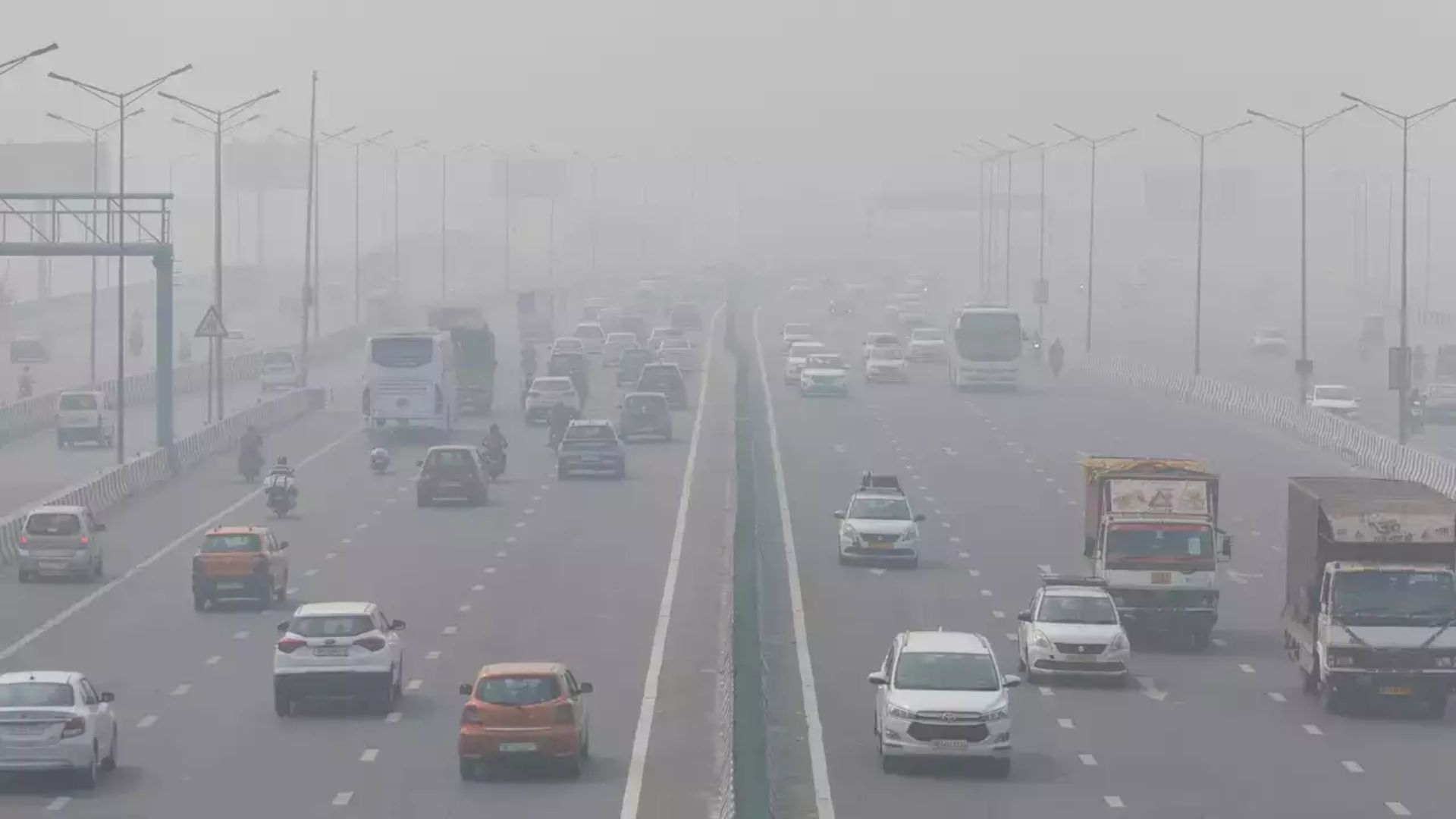Delhi-NCR has been put under stricter anti-pollution measures once again as the Graded Response Action Plan (GRAP) Stage III restrictions were activated in view of deteriorating air quality. This decision comes after a sharp decline in the Air Quality Index (AQI), which has crossed the 350 mark in the last few days. The CAQM had announced the imposition of Stage III restrictions on Thursday.
What Caused The GRAP Stage III Curbs In Delhi?
On January 9, Delhi saw a drastic deterioration in its air quality due to a combination of factors, such as low wind speeds and persistent fog. The AQI on January 8 was recorded at 297, but by 4:00 pm on January 9, it had risen to 357, and the CAQM issued stringent measures.
According to the Commission, the AQI increase was mainly influenced by the foggy conditions and the low wind speeds, which trapped pollutants close to the ground.
To check the harmful impacts of worsening air quality, the Stage III of Graded Response Action Plan is enforced. Apart from that, measures in Stage I and Stage II restrictions would be sustained. Authorities would regularly monitor and reassess AQI in Delhi and the National Capital Region to bring AQI under better conditions.
“Residents are advised to adhere to the guidelines under GRAP Stage-III to minimize exposure to harmful pollutants,” CAQM declared.
How GRAP Stage III Impacts Delhi Residents
As part of the GRAP Stage III guidelines, several restrictions have been placed on various sectors to control pollution. Some of the major steps include:
- Construction and demolition bans for private projects: The construction activities that are responsible for causing dust and particulate pollution will be stopped.
- Shift to hybrid learning for schools up to Class 5: Since the kids need to be protected from outdoor pollution, they will be engaged in online or hybrid learning from schools up to Class 5.
- BS-III petrol and BS-IV diesel vehicles: These vehicles will be banned from operation as they are always found to emit high levels of pollutants.
- Non-essential BS-IV diesel-operated medium goods vehicles banned: Heavy-duty trucks and other diesel-operated vehicles will be restricted from entering Delhi unless they are essential for operations.
These measures are aimed at reducing the levels of pollution and protecting the health of the residents, especially children and vulnerable groups.
Why Delhi Faces Repeated Pollution Warnings
The air pollution crisis in Delhi is ongoing and worsens in the winter season, especially as the dense fog sets in. According to reports from the India Meteorological Department, the minimum temperature in Delhi was recorded at 5°C on Thursday. The severe cold wave conditions resulted from this record minimum temperature.
The low wind speeds coupled with the foggy weather make for an ideal setting where pollutants become trapped in the atmosphere, which further deteriorates the air quality.
The CAQM had earlier withdrawn the Stage III restrictions on January 5 based on a positive trend in the AQI since the levels were improving. The reversal in air quality, however, led to the immediate imposition of more stringent measures.
Understanding The Air Quality Index System
AQI is a measuring scale of how the concentration level of pollutants are present in air that can, as such, decide health risk implications of the pollution in the populations. The AQI according to the Central Pollution Control Board can be grouped as follows.
- 0-50 Good
- 51-100 Satisfactory
- 101-200 Moderate
- 201-300 Poor
- 301-400 Very poor
- 400 or above Severe
With Delhi’s AQI reaching the “very poor” category, it has triggered the implementation of Stage III restrictions. If the AQI crosses the 400 mark, Stage IV measures will be enforced, further tightening restrictions to protect public health.
As the air quality worsens, it is essential for the residents of Delhi to adhere to the measures announced by the CAQM under Stage III of the GRAP. With the fog and low winds continuing to prevail, the authorities will continue to monitor the pollution levels and take necessary actions to ensure public health.




